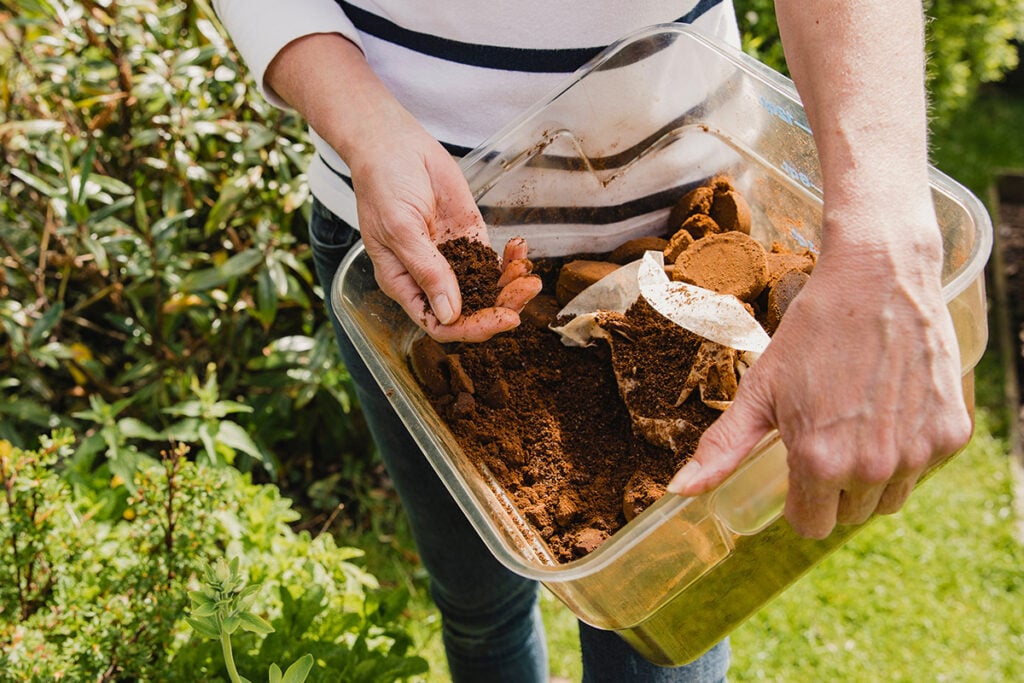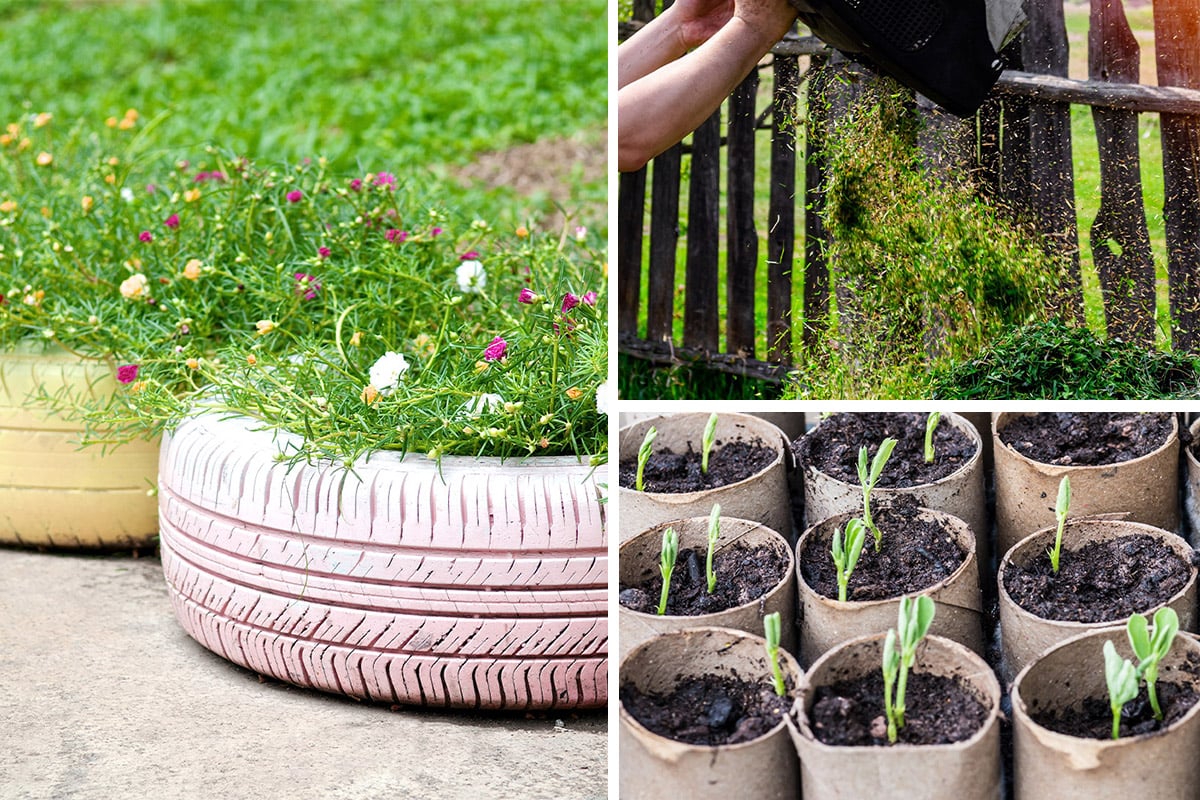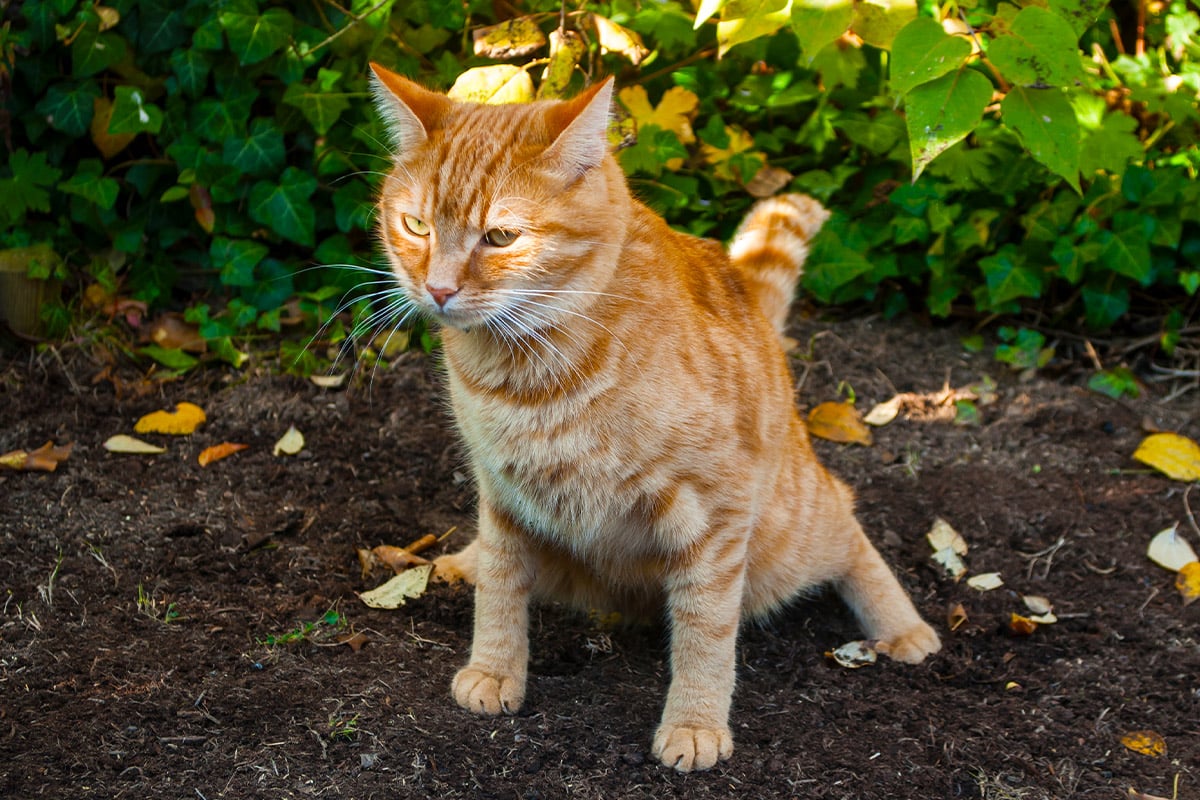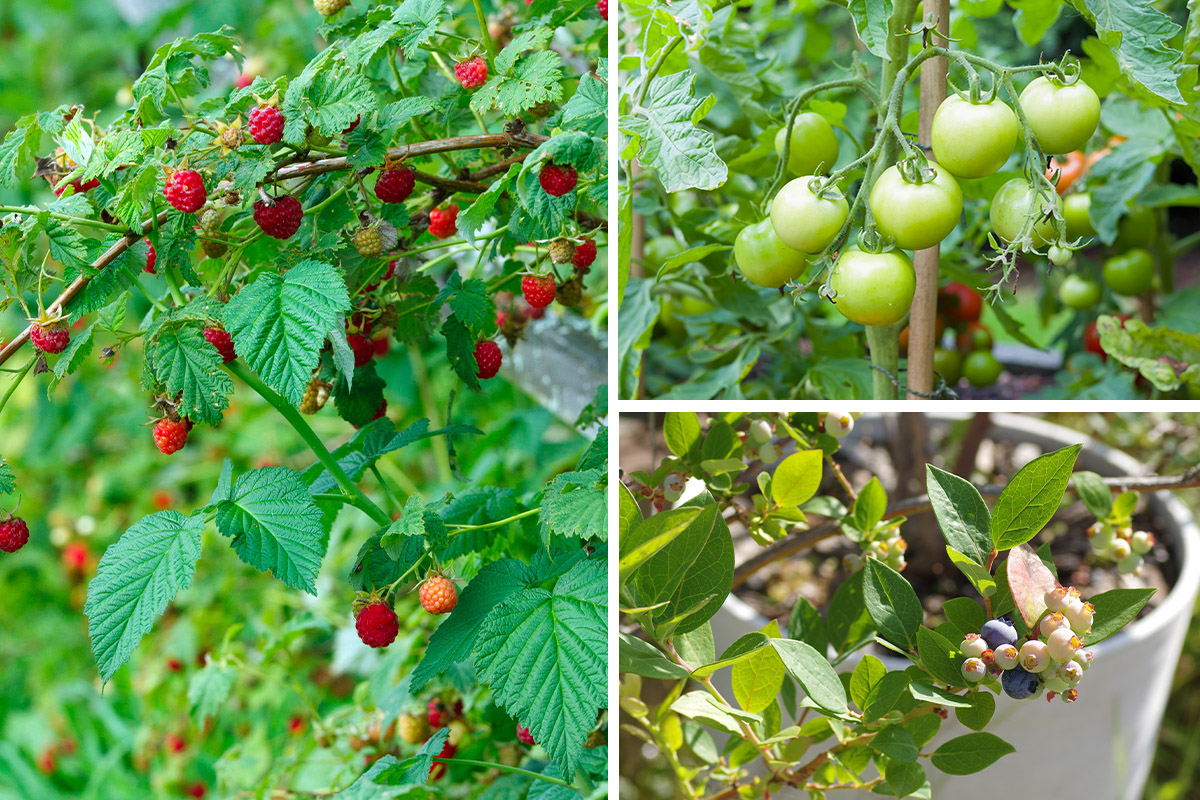Many gardeners are always looking for natural and sustainable ways to improve their gardens, and using coffee grounds has become increasingly popular for this purpose. With millions of people drinking coffee every day, there's no shortage of used grounds that can be repurposed for the benefit of your garden.
Coffee grounds are rich in nutrients that plants need, such as nitrogen, potassium, and phosphorus. Moreover, they can help with soil improvement, pest control, and composting. This article will explore how you can incorporate coffee grounds into your garden to improve soil quality, support plant growth, and create a more sustainable environment.

Benefits of Coffee Grounds in the Garden
Used coffee grounds can offer several benefits to your garden, enhancing your plants' overall quality and productivity. This section will explore the advantages of using coffee grounds in the garden.
Fertiliser
As a natural source of nutrients, coffee grounds can be used as an effective and inexpensive fertiliser. Coffee grounds are rich in nitrogen, potassium, phosphorus, and various micronutrients that plants need for healthy growth.
This means that instead of throwing away your used coffee grounds, you can repurpose them to feed your plants and encourage stronger, more vigorous growth.
They are not chemical fertilisers, however, and will not work in the same way. They are not an instant boost but rather a slow improvement over time. The nutrients in coffee grounds need to be broken down in your soil before being accessible to your plants. So don't expect instant results!

Acid-Loving Plants
Several types of plants prefer slightly acidic soil, and coffee grounds can help provide this. Some acid-loving plants include hydrangeas, azaleas, rhododendrons, and blueberries.
This is usually touted as a massive benefit of using coffee grounds, as it is believed they are highly acidic. The truth is that used coffee grounds are not actually that acidic coming in with a pH of 6.5 to 6.8.
This is because while coffee itself is acidic, a lot of the acidity is washed away when the coffee is brewed and ends up in your coffee cup rather than in the leftover grounds!

Composting
Coffee grounds can be an excellent addition to compost piles or bins and this is what I do more often than not. They are rich in nitrogen, which is essential for the decomposition process. To include coffee grounds in your compost, simply mix them into your current compost materials.
The nitrogen in the coffee grounds will help accelerate the decomposition of other materials and create a healthy, nutrient-rich compost for your garden.
It's essential to maintain a proper balance of green (nitrogen-rich) and brown (carbon-rich) materials when composting. Coffee grounds are considered green, so make sure to add an equal amount of brown materials, such as leaves or cardboard, to maintain the balance.

Worm Farms
Worm farms, also known as vermiculture, are popular for recycling organic waste into nutrient-rich worm castings. One of the items you can add to your worm farm is used coffee grounds.
In fact, worms love coffee grounds, and they help create a balanced ecosystem inside the farm. Alongside fruit and vegetable scraps, coffee grounds provide the proper nutrition and environment for worm reproduction and growth.
When adding coffee grounds to your worm farm, please don't overdo it. Excess amounts can lead to acidity and temperature issues. Monitor your worm farm’s performance and adjust the addition of coffee grounds as needed to maintain a healthy environment for your worms.

Soil Improvement
One of the primary benefits of coffee grounds is that they help improve soil quality. By adding organic material to the soil, coffee grounds can enhance drainage, water retention and aeration in your garden. This results in a better growing environment for your plants.
How to Apply Coffee Grounds
This section will explore various methods of using coffee grounds in the garden, including directly applying them into the soil, and making coffee grounds tea.
Direct Application
One of the simplest ways to use coffee grounds in the garden is through direct application. Simply sprinkle the used grounds on the soil surface around your plants. This method can help improve soil structure, add nutrients, and even deter pests like slugs and snails.
It's essential to spread the grounds thinly and evenly to avoid creating a thick layer of grounds which can form a barrier that prevents water and air from reaching the plant's roots. HGTV recommends using no more than half an inch of coffee grounds to keep a healthy balance.
Incorporating into Soil
Another method to utilise coffee grounds in the garden is incorporating them into the soil. First, mix the coffee grounds with other organic matter like leaf mold, compost or well-rotted manure. This mixture can then be tilled into the top few inches of soil to improve its structure, increase aeration and nourish plants.
It's important to use a balanced ratio of coffee grounds to other organic matter to prevent too much altering the soil's pH, as coffee grounds can be slightly acidic.
Making a Coffee Grounds Tea
Coffee grounds can also be used to apply nutrient-rich "tea" to your plants. To make coffee grounds tea, follow these steps:
- Add one part used coffee grounds to five parts water in a bucket.
- Allow the mixture to steep for at least 24 hours, stirring occasionally.
- Strain the liquid to remove the coffee grounds.
The resulting coffee grounds tea can be used as a liquid fertilizer, providing essential nutrients to your plants. Be sure to dilute the tea with equal parts water before applying it to your plants to avoid over-fertilization or burning your plants.





Roy says
Thank you for your idea on the use of coffee grounds As I am keen on recycling my waste what is your idea on Tea bags thank you
Daniel says
Tea bags can be great, as long as they don't contain plastic. If they do you can always chuck the tea leaves on the compost heap and throw the bags away.